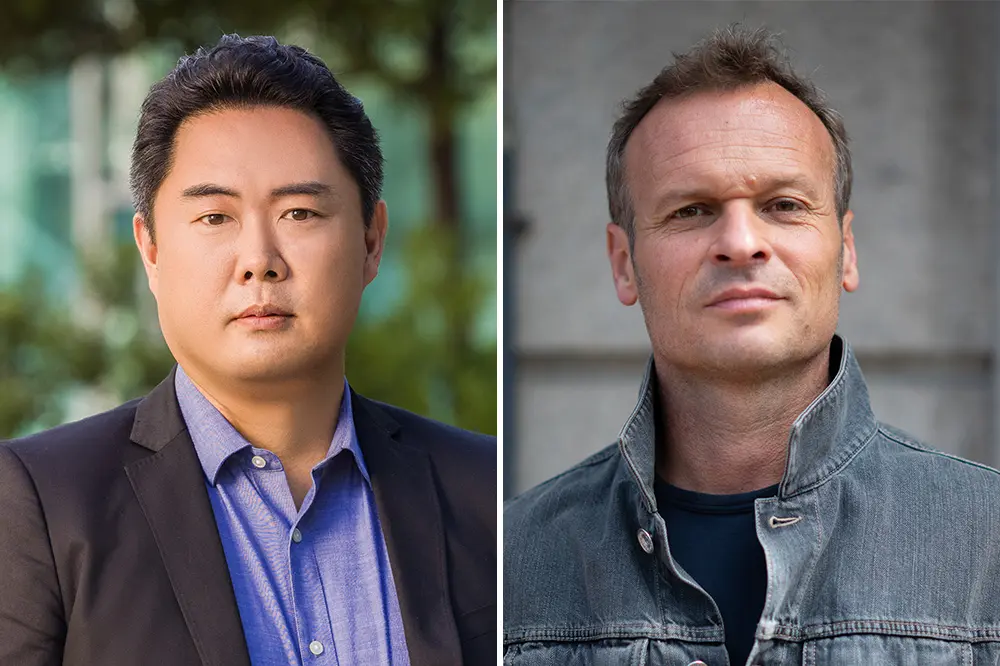Inside PlayStation’s Dual-Leadership: A New Era for the Gaming Giant
Innovative leadership and the future of Sony Interactive Entertainment
In a surprising move, Sony recently restructured its leadership, appointing Hermen Hulst and Hideaki Nishino as dual CEOs of Sony Interactive Entertainment. This shift marks a significant evolution in how the company is managed, prompting a blend of strategic innovation and specialized oversight for both platform and studio operations.
Two minds, one vision
Sony’s decision to split leadership responsibilities between Hulst and Nishino initially raised some eyebrows. Traditionally, having two CEOs can lead to friction and a lack of clarity in direction. However, in an exclusive interview, the duo shed light on their collaborative approach and how it’s tailored to the burgeoning scale of Sony’s gaming empire.
Hermen Hulst and Hideaki Nishino emphasize that this isn’t merely a co-CEO arrangement but rather a division of labor designed to leverage their unique skills. “It’s not about two co-CEOs,” Nishino explains. “Hermen runs his segment, I run mine, and we come together to strategize on growing the business.”
Bridging expertise with hands-on experience
Both Hulst and Nishino have deep roots in the gaming industry, which significantly influences their leadership style. They estimate spending 80% of their daily schedule in their respective domains—Hulst managing studio operations and Nishino overseeing platform experience. This split allows each to focus on their areas of expertise while fostering a high degree of trust.
Hulst noted, “Having two developers at the helm is advantageous. With both of us holding engineering degrees and being very hands-on, it creates a strong, symbiotic relationship.” This technical proficiency ensures that they understand the nuances of the gaming development pipeline, from design and engineering to production and release.
Adapting in uncertain times
The restructuring comes during a turbulent period for PlayStation. Recent studio shutdowns, including Firewalk Studios and Neon Koi, coupled with significant layoffs at Bungie, highlight the volatile nature of the gaming industry. Additionally, controversies like the backlash over the $699 price tag for the upcoming PS5 Pro add to the operational challenges.
Despite these hurdles, the company is also seeing successes. The new platformer Astro Bot has attracted rave reviews, and anticipation is growing for the announced sequel Ghost of Tsushima: Ghost of Yōtei. Similarly, PlayStation’s ventures into television with HBO’s The Last of Us and Amazon’s upcoming God of War series are propelling the brand to new heights.
Strategic product evolution
Focused on innovative product development, the lineage of high-end consoles continues with the PS5 Pro. “When we launched the PS4 Pro, 20% of our customers opted for the premium tier,” Nishino shared. “We started working on the PS5 Pro even before the PS5’s release.”
The idea is to offer consumers a choice within the same generation. “While phones and PCs update annually, we talk about packaging advancements every three to five years for game consoles,” Nishino elaborates. The PS5 Pro isn’t next-gen but an advanced option within the PS5 generation, catering to those seeking enhanced visual fidelity.
The balanced art of portfolio and platform management
PlayStation’s strategy involves meticulous planning and optimization of their game portfolio. Hulst explains, “From the early stages of the PS5, our goal was to deliver high-quality titles immediately, and this approach has solidified our standing in the market.” Teams like Team Asobi are instrumental in evolving hardware features and integrating these innovations into gameplay.
Additionally, PlayStation Studios takes great pride in hardware planning, constantly looking for synergy between tech advancements and game development. Both Nishino and Hulst emphasize the collaborative spirit within the organization, which not only fuels creativity but also sets benchmarks for third-party developers.
Adapting franchises for a new era
PlayStation’s foray into television adaptations has been game-changing. The success of The Last of Us HBO series highlighted the importance of maintaining authenticity and involving original creators. Currently, PlayStation Productions has 10 projects in the pipeline, including Twisted Metal and other exciting titles.
Hulst underscored the meticulous care in managing these franchises, “We’re not merely adapting games but building worlds that can tell stories across various mediums.” This vision extends to creating robust franchise teams and portfolio management processes, ensuring the continuous evolution and expansion of PlayStation’s IP library.
Navigating industry challenges
Layoffs, studio closures, and rapid technological advancements pose ongoing challenges. However, PlayStation’s leadership remains focused on sustainable growth and prudent resource management. Hulst remarked, “Our duty as CEOs involves ensuring business sustainability while valuing our employees and work environments.”
Despite these trials, PlayStation Studios has grown significantly, both organically and through strategic acquisitions. This expansion underpins the company’s leading position in the gaming industry, fostering innovation and supporting long-term goals.
As PlayStation continues to navigate the dynamic landscape of the gaming world, the leadership of Hermen Hulst and Hideaki Nishino promises a forward-thinking, resilient strategy. Their unique combination of technical prowess and creative vision is poised to guide PlayStation through its next chapter.
Keep an eye on PlayStation’s journey by sharing this story on your favorite social media platforms or following us for more updates on the latest in the gaming industry.

 Italian
Italian







